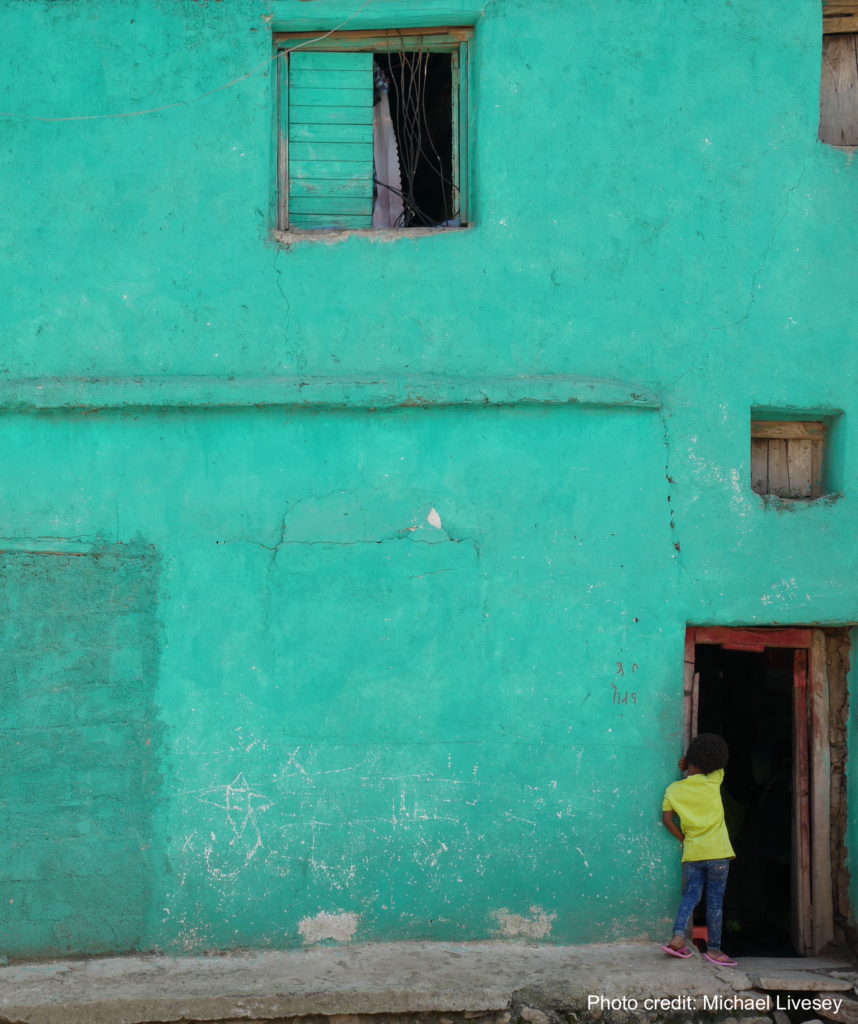
Bryony Vince
‘Solutions based on the knowledge, culture, history, experiences and socio-economic context of the area experiencing conflict should be the assumed default or benchmark, with external solutions as secondary or complementary…’
Eurocentrism and peacebuilding: peace for whom?
The conventional approach to peacebuilding after the Cold War was rooted in a Eurocentric understanding of the causes of conflict, based on prejudiced assumptions about underdevelopment and ‘civilisational’ difference in the Global South.
Eurocentrism can be understood as a prejudice or consciousness premised on the belief (implicit or otherwise) that ‘the West’ is culturally, institutionally, and intellectually distinct from and superior to the ‘non-West’. Geographically, ‘the West’ broadly refers to North America and Western Europe, but it has also come to be a constructed category indexed to modernity, liberalism, rationality, and (as Meera Sabaratnam argues) whiteness. Eurocentric analyses, therefore, organise cultural differences through racialised categories such as West/non-West, modern/traditional, liberal/local.
This is problematic, particularly when solutions based on this binary thinking are advertised as objective and universally applicable, and used to prescribe solutions to creating peace in conflict areas where both people and knowledge have not only been historically omitted from the narrative but depicted as inferior. For example, since the 1990s, conflict was widely understood to be a symptom of underdevelopment (which became synonymous with ‘being unlike the West’), state failure, and cultural and religious difference in the Global South. As such, the solution – dubbed by critics as ‘the liberal peace’ – was premised on the Global North bringing peace to the Global South through socio-economic and political reform. Though this started as an ‘agenda for peace’, critics argued that in reality it was an out-of-touch, neo-imperial mechanism to control the Global South and mitigate a perceived threat to the West, based on prejudiced assumptions about non-Western inferiority and disorder. As such, it begged the question: peace for whom?
Looking to the ‘local’
There were therefore calls to realise more ‘bottom-up’, ‘hybrid’, ‘local’, and ‘everyday’ conceptions of peacebuilding that recognised the agency of local actors and their integration into post-war solutions, including how they interacted with or resisted the liberal peace.

While this is important, indigenous approaches exist outside of their interaction with or resistance against the West; focusing on agency in this way and the integration of local actors into peacebuilding processes implies that their participation is secondary or complementary to an assumed pre-existing Western intervention strategy. For example, you may be sympathetic to the need to include local actors in peacebuilding processes, but are you imagining a world in which the West isn’t spearheading conflict resolution and peacebuilding initiatives in that context? Instead, solutions based on the knowledge, culture, history, experiences and socio-economic context of the area experiencing conflict should be the assumed default or benchmark, with external solutions as secondary or complementary.
This isn’t to say that solutions derived from knowledge between contexts can’t or shouldn’t be shared. By all means, they should. But, if the main aim of peacebuilding is to implement initiatives aimed at transforming conflict towards more sustainable, peaceful relationships, this should be primarily led by contextually relevant knowledge and experiences and, importantly, include an understanding of any pre-existing approaches to conflict resolution that are indigenous to that specific society.
Ubuntu and conflict resolution in South Africa
For example, the pan-African worldview of Ubuntu has been instilled in practice, both pre- and post-colonialism, as a tool for resolving conflict both nationally and locally. My PhD research involves engaging with the potentially nuanced and situated understandings of Ubuntu by individuals who ascribe to its values, through photography and personal reflection. In advance of that research, I’ll provide a broad though by no means complete explanation of Ubuntu, derived from the African Studies literature.
Ubuntu is broadly encapsulated by the phrase umuntu ngumuntu ngabantu which loosely translates to ‘a person is a person because of/by/through other people’. Under Ubuntu, the individual isn’t separate from the community; individual security, safety, and well-being depend on ensuring the same for others in your community.
Because of its focus on community and inter-dependence, Ubuntu aligns closely with a restorative approach to justice, which involves bringing survivors and perpetrators of crime into communication. For example, before colonialism, Ubuntu informed how conflict was resolved within communities – encompassing everything from minor disputes to murder. Disputes were traditionally resolved through a group mediation and reconciliation forum – an Inkundla or Lekgotla – led by a council of Elders. This involved victims, witnesses, perpetrators, and other members of the community coming together to resolve the problem, reconcile, and provide reparations for victims. During the transition from the Apartheid regime in South Africa, Ubuntu’s core values were brought back into public discourse and heavily drawn upon at the national level. Ubuntu played a key part in cementing the reconciliation process – constitutionally, but also in the social imaginary. For example, the Truth and Reconciliation Commission (TRC) focused on the idea of communal responsibility and storytelling as a vehicle for conflict resolution. Ubuntu was also written into the 1993 Constitution of the Republic of South Africa Act 200; and has since been drawn upon, not only to inform constitutional law and justice, but for diplomacy, foreign policy, civil society, and community development.
I use this as an example as it emphasises that there may be approaches to conflict resolution that are indigenous to a particular space and therefore better suited to inform post-war peacebuilding processes in that context. It’s therefore important to understand knowledge as being situated. I.e., knowledge isn’t objective or universal – but reflects the conditions and context in which it’s produced. This helps us to understand that Eurocentric approaches are not universally applicable, objective, and inevitable (as alleged); and that knowledge and experiences situated within a particular society may be better equipped to produce long-lasting peace.
Moving forward
There’s been a lot of fantastic research that has uncovered and engaged with indigenous approaches to conflict resolution, and my PhD research aims to contribute to this (see: Lederach; Murithi; Maphosa, DeLuca & Keasley; Arthur, Issifu & Marfo; de Coning). I’m particularly interested to learn about the value of Ubuntu to individuals and communities in South Africa that have experienced/are experiencing civil conflict and unrest; how it’s drawn on to create peace at the national, local, and individual level; and how this has been received by the targets of those initiatives.
Looking forward, we must simultaneously unlearn what we’ve been told are universal ‘facts’: and walk with, engage with, and learn from situated approaches to not only peacebuilding but political phenomena in general. The adoption of more participatory, respectful, collaborative, and non-extractive approaches to research goes hand-in-hand with this agenda.

